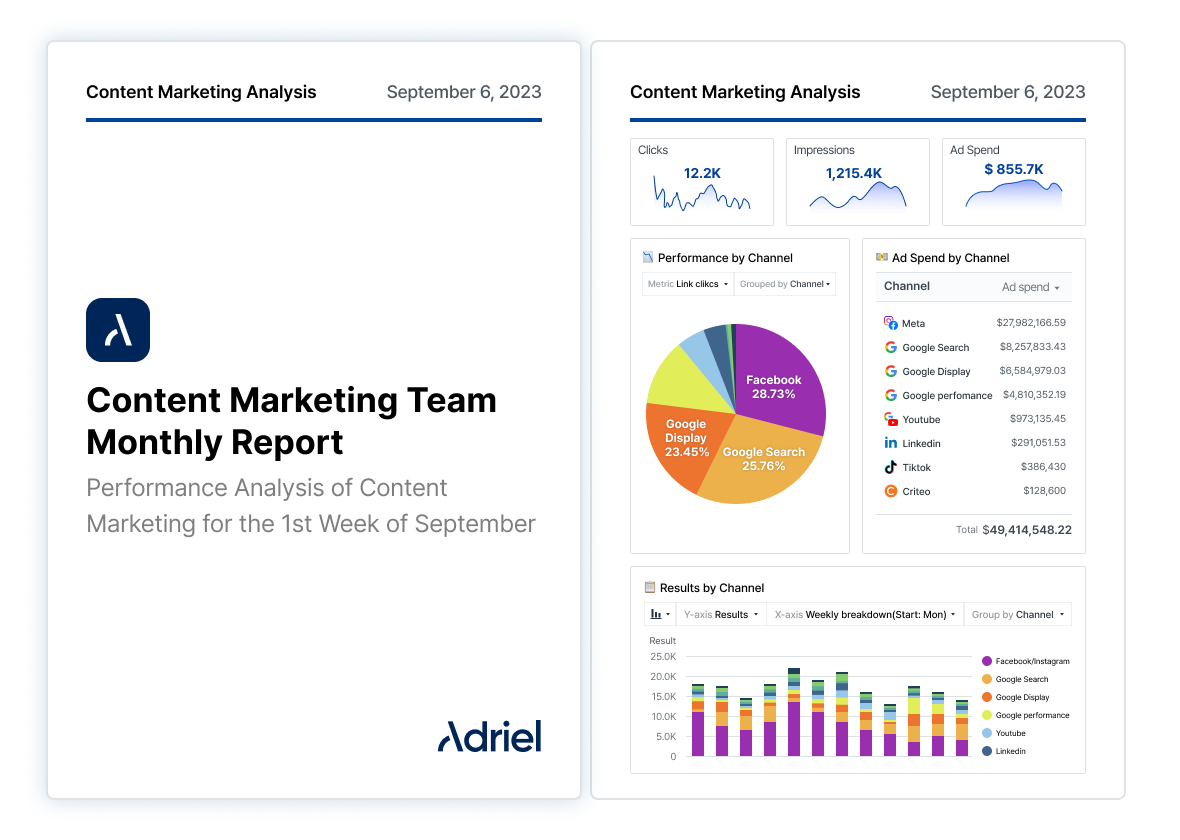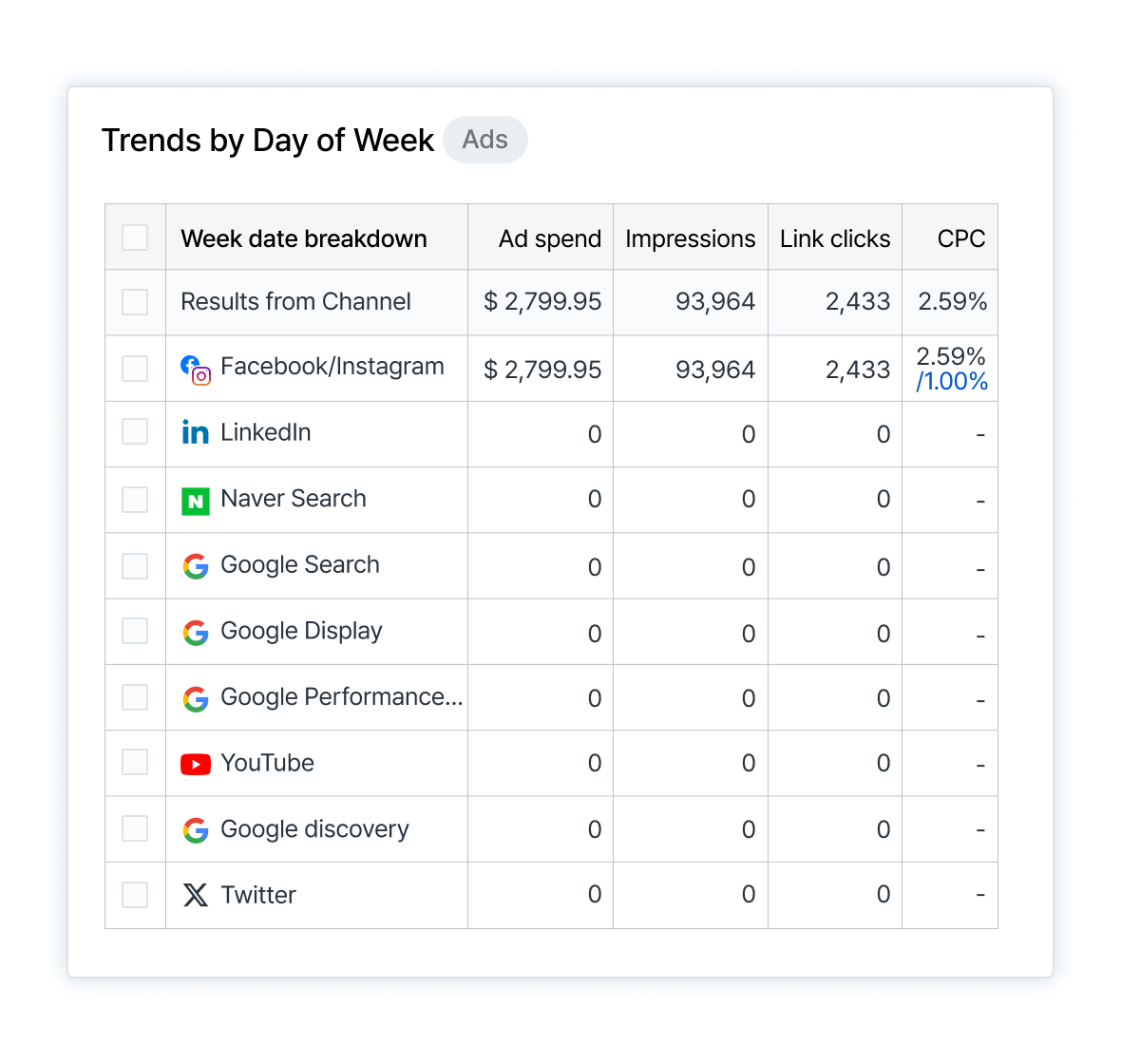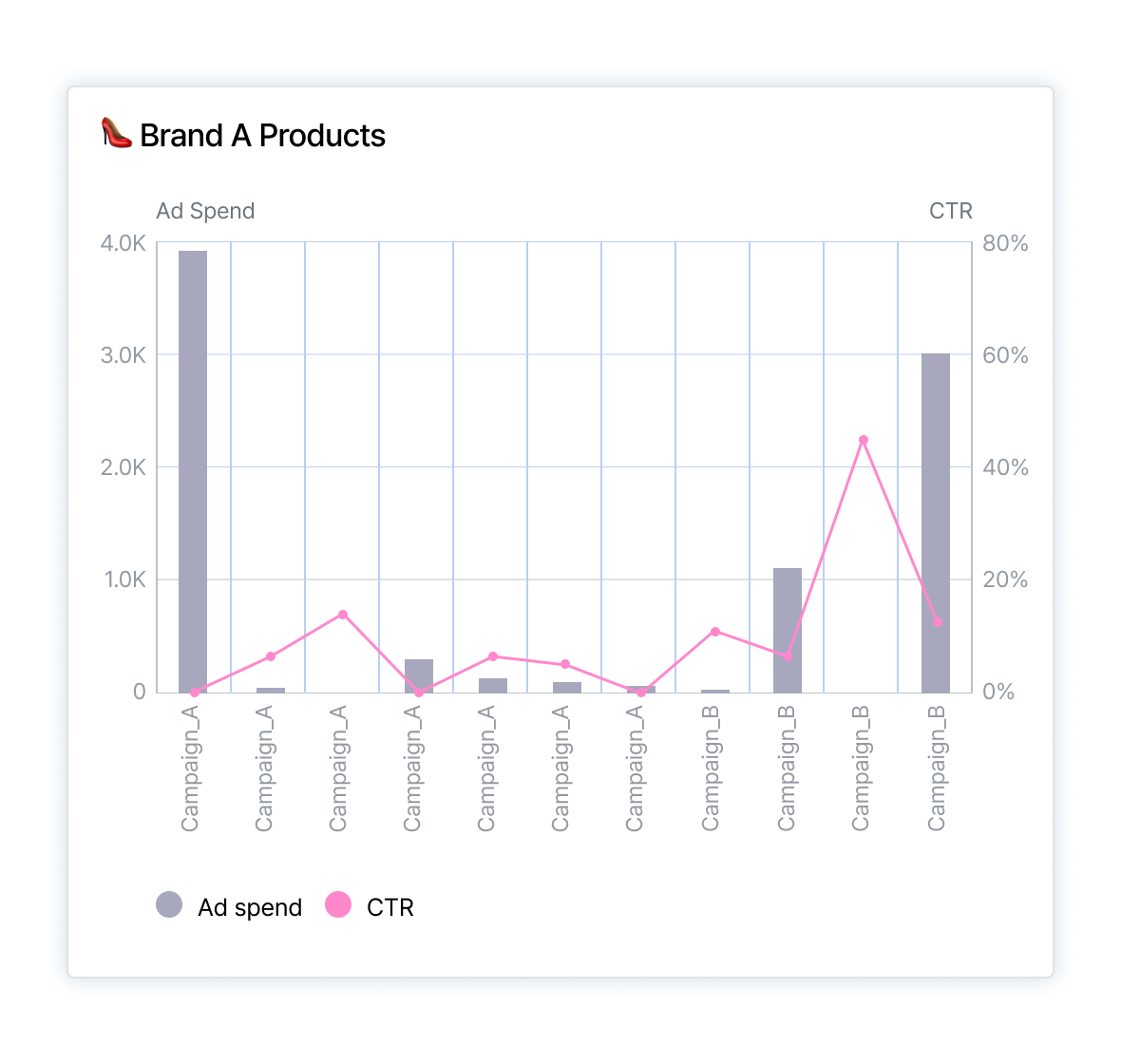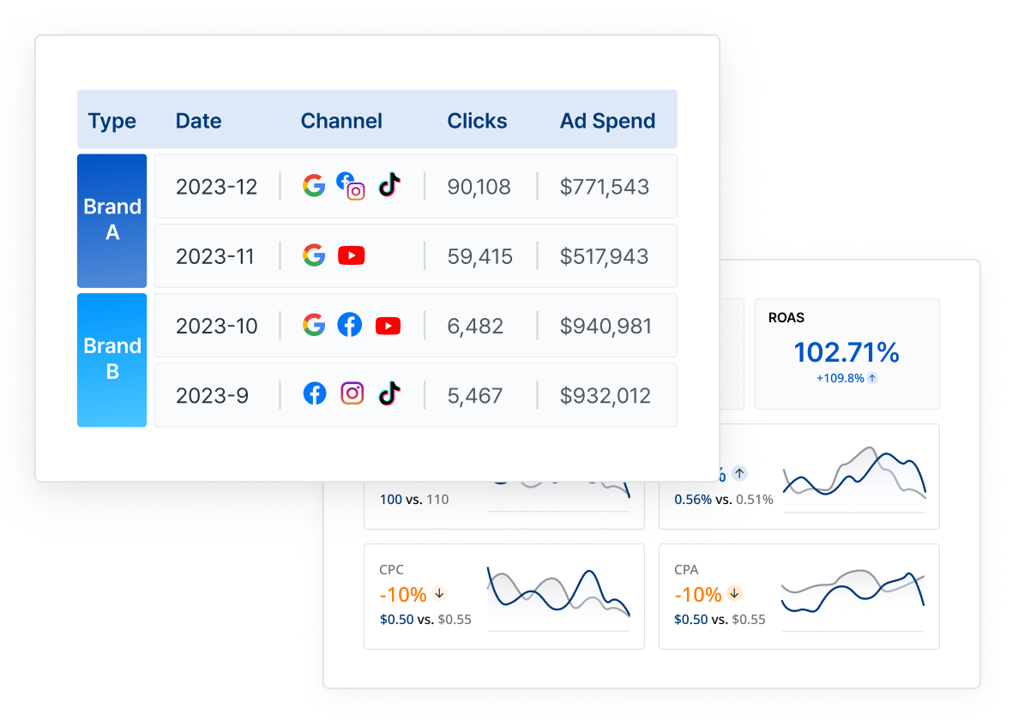Refer a partner and get paid! Earn 20% of all qualifying subscriptions referred to our team 👉

Learn More
Analyze marketing performance for each brand and product in your portfolio. Map marketing KPIs to each brand and channel and automate data flow and reporting.
Get more insights for growth and meet marketing objectives for all your brands.



Brand performance dashboards are marketing analytics tools that integrate data from various channels for different brands and visualize key metrics on one dashboard. It is most suitable for agencies managing multiple brands or marketing teams overseeing sub-brands and products.
On Adriel, you can set custom alerts to notify you when critical metrics fluctuate and instantly turn off marketing campaigns or reallocate budget - natively from the marketing analytics dashboard.
Get actionable insights to inform your marketing strategy and reach marketing objectives for all your brands and clients.
Creating a consolidated marketing performance dashboard for different brands is super easy on Adriel. Just connect your paid ads or marketing platforms drop-down menu and your data will start flowing onto the dashboard automatically. No coding or technical knowledge required.

Sign up for Adriel with your email after your demo.
You can then select a pricing plan that suits your needs.

Simply choose from a drop-down list to import dimensions and metrics from your client’s ad accounts, analytics tools, and mobile measurement partners.
Adriel supports integrations with up to 650+ data sources, including social media channels, ad platforms, analytics tools, and eCommerce platforms.
And if you don’t see an integration that we support natively, we can create custom integrations just for you.

Use our ready-made templates to instantly see all your KPIs in minutes.
Or, start from a blank page and choose your data visualization widgets and graph types.

Set up different views for each account manager or client in just a few clicks. Give different access permissions and collaborate with others on a live dashboard.

Automate your entire client reporting process. Determine your clients’ brand visuals, colors, and logos, and download fully customized reports as PDFs or CSVs. Or share links to the live dashboard with clients.
With Adriel’s brand digital marketing dashboard, you won’t have to worry about designing your own dashboards. We’ve already pre-filled all the values for you. Here’s how we structured it:
At the top of your marketing dashboards, include a summary of key performance changes and critical metrics, as well as a scatter graph indicating the performance of each brand.


Next, analyze results created by each brand, based on previously-agreed upon key metrics. Use a bar chart to analyze year-over-year trends, and a pie chart to understand results across different brands.
Take a deep dive into KPIs for each brand. Some marketing metrics and KPIs that companies set include:


This section shows you results from your online marketing efforts on each channel. You can further break down these values by week, month, quarter, or year.
Take a step further and dissect performance for each product under each brand.









When reporting Meta Ads, you will want to visualize Instagram Ads and Facebook Ads performance side-by-side to understand how each platform is contributing to your digital marketing goals. Here’s how it looks like on Adriel’s report template:





Integrate all your paid ad channels’ results into one marketing reporting dashboard. Curious to know how your Meta, Google, or TikTok Ads are performing? Connect all of these platforms to Adriel, and in less than 5 minutes, show all of your paid campaign results in one unified dashboard. See our integrations page for more information.


Our software was expertly designed with powerful functions for marketers. But everything can be customized. Adriel’s flexibility allows you to change all aspects of the dashboard design and appearance. Impress your clients with a professional marketing reporting dashboard report for an expert brand image.
You can start from a blank page to create a marketing reporting dashboard, but what if you don’t have time? Our extensive pre-made marketing reporting dashboard library has everything you might need. Try Adriel, and you’ll have more time to research ways to increase conversion or optimize your landing pages.













.png)

Brand performance dashboards offer several advantages, especially if you're managing multiple brands or marketing teams overseeing sub-brands and products:

Creating a brand dashboard takes only 3 steps on Adriel. All you need to do is:
All your data for different brands will be populated beautifully into charts and graphs.

The best brand performance dashboard template should have these key features:

We offer an arsenal of dashboard templates for different marketing channels and purposes. Here are some of our most popular ones: